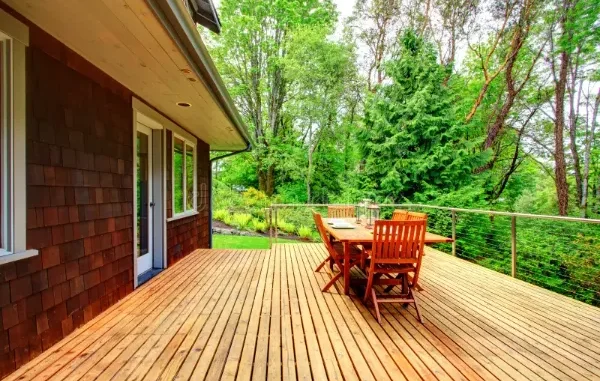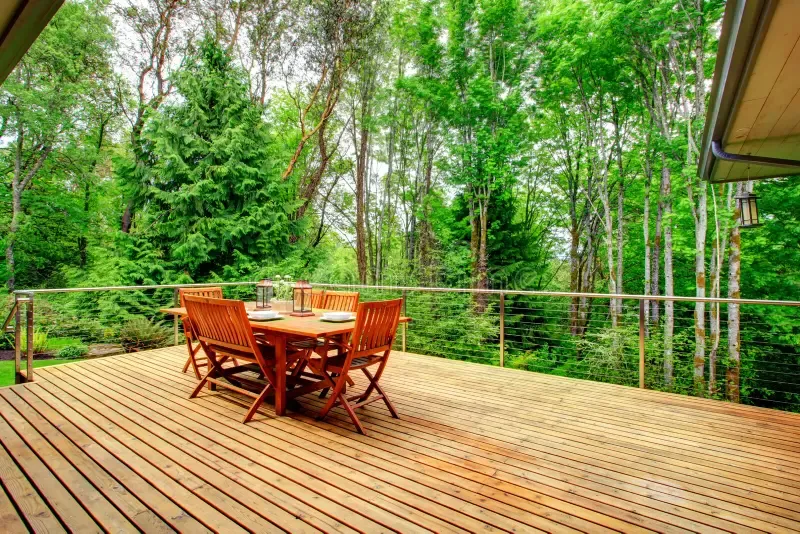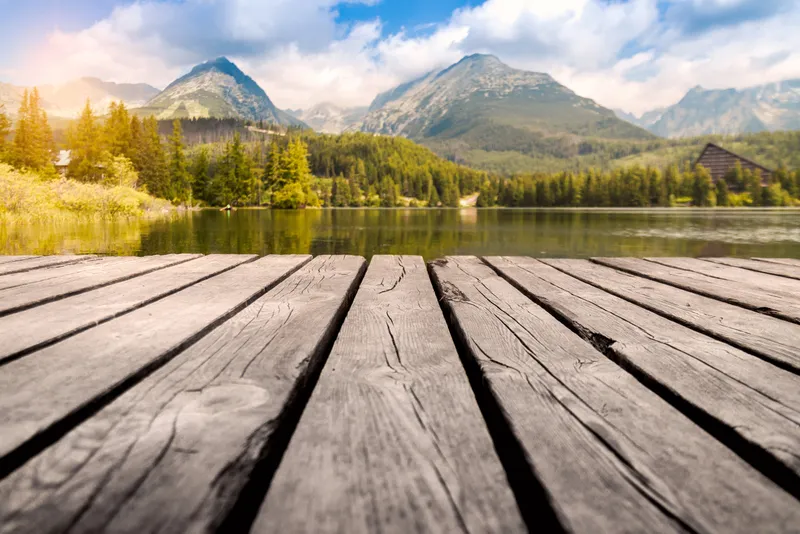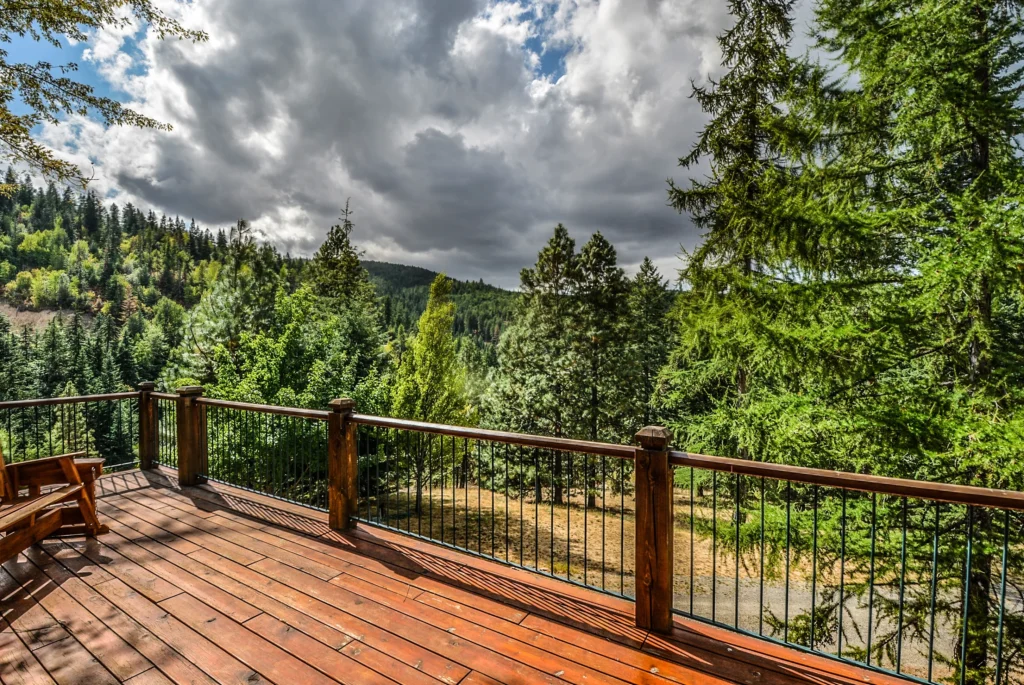
A backyard deck can be much more than a platform for furniture and a grill. When done right, it becomes a natural extension of your landscape—a space that feels like it belongs exactly where it is. But achieving that kind of seamless integration doesn’t happen by accident. It takes planning, smart design, and an understanding of how your outdoor environment works.
Here’s how to create a deck that feels like it belongs—one that works with your yard, not against it.

1. Start With Your Surroundings
Before you sketch a single design or pick out materials, take a good look at your outdoor space. What kind of yard do you have? Is it wooded, open, sloped, flat, shaded, or sunny?
A successful deck design responds to these conditions rather than imposing itself. For example:
- In a wooded lot, darker, natural-toned materials can help the deck disappear into the trees.
- In a wide-open yard, a low-profile platform with horizontal lines can preserve the horizon.
- On a slope, tiered levels can follow the natural grade rather than requiring major excavation.
Your landscape sets the tone—use it as a guide, not an obstacle.
2. Choose Materials That Match the Environment
The materials you use play a huge role in how well your deck blends into the space. Avoid shiny, artificial-looking finishes that contrast too sharply with your surroundings. Instead, opt for colors and textures found in nature.
Good material choices:
- Natural wood: Cedar, redwood, and thermally modified woods age beautifully and take on earthy tones.
- Composite decking: Available in weathered wood and stone-inspired colors that mimic natural elements.
- Stone accents: Use stone or pavers at the base of the deck or steps to visually tie it into the ground.
Matching or complementing the colors in your landscape—soil, bark, foliage—helps your deck feel like a part of the terrain.
3. Think in Layers, Not Just Levels
One way to avoid a deck that looks like it was just “stuck on” is to create a design that transitions smoothly between the deck and the yard.
Ideas for natural transitions:
- Use planter boxes, built-in benches, or retaining walls to soften edges.
- Add wide, shallow steps instead of a single flight of stairs.
- Let plants cascade around the deck’s perimeter to blur the line between structure and soil.
If your deck is elevated, don’t leave the underside exposed. Skirt it with lattice, vertical boards, or even shrubs to integrate it visually.
4. Integrate Landscaping Into the Deck Design

Instead of building a deck around your landscape, try building it with the landscape. That could mean:
- Designing around existing trees (and leaving space for growth)
- Creating cut-outs in the deck for planters or tree trunks
- Positioning the deck to preserve views or highlight natural features
You can even run the decking boards in patterns that echo the flow of nearby walkways or garden beds.
The goal is to make it feel like your deck emerged organically from the space—not like it landed there in a prefab box. A knowledgeable Minneapolis deck builder can help you integrate natural elements directly into your deck’s design, so it fits seamlessly with your environment.
5. Use Plantings to Anchor the Space
Plants are the bridge between the deck and the earth. Use them intentionally to soften hard lines and add color, texture, and movement.
Tips for effective planting:
- Choose native or climate-appropriate plants that thrive with minimal care
- Use layers: groundcovers, shrubs, grasses, and small trees
- Add pots or raised planters on the deck itself to extend the green space upward
Let plants spill over edges and fill in gaps. They make even a modern deck feel alive and rooted in its setting.
6. Match the Style of Your Home and Garden
A deck shouldn’t clash with your home’s architecture or garden’s vibe. A clean, modern house pairs well with sleek lines and minimalist railings. A rustic farmhouse may look better with rough-sawn timber and chunky details.
Think of your deck as the transition zone between indoor and outdoor living. It should echo the style of both.
7. Lighting and Details Matter

Subtle lighting can help your deck fade into the landscape after dark rather than standing out like a spotlight. Use warm, low-voltage fixtures to highlight stairs, railings, and nearby plants.
Other finishing touches like natural fiber furniture, outdoor rugs, and weathered metals can pull the look together.
Final Thoughts
Blending your deck seamlessly with your landscape isn’t just about looks—it’s about creating a space that feels right. One that flows with your yard, supports how you live outside, and enhances everything around it.
Take your time. Observe your yard. Let your landscape lead, and design the deck to follow. When you strike that balance, your outdoor space becomes more than functional—it becomes effortless.






Leave a Reply